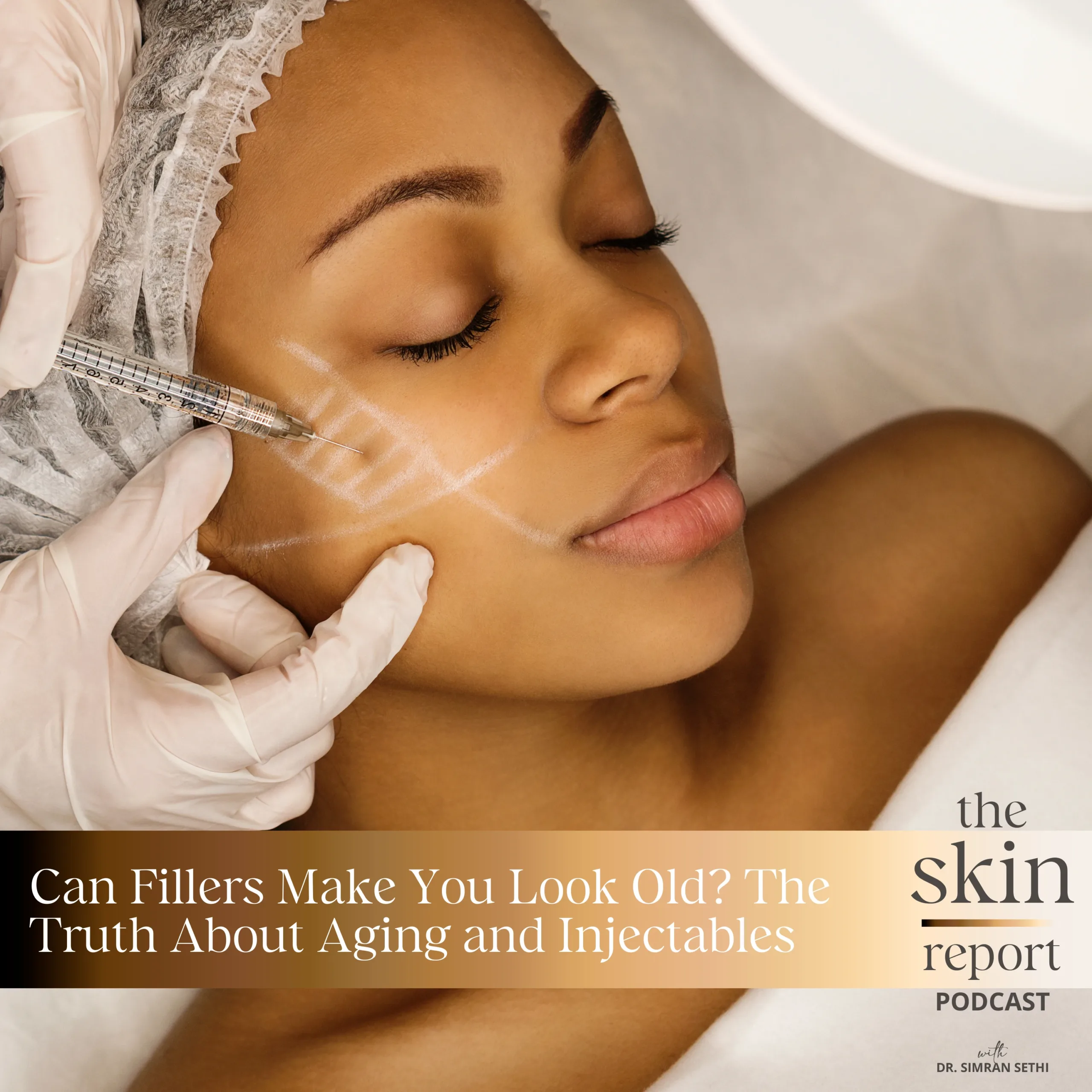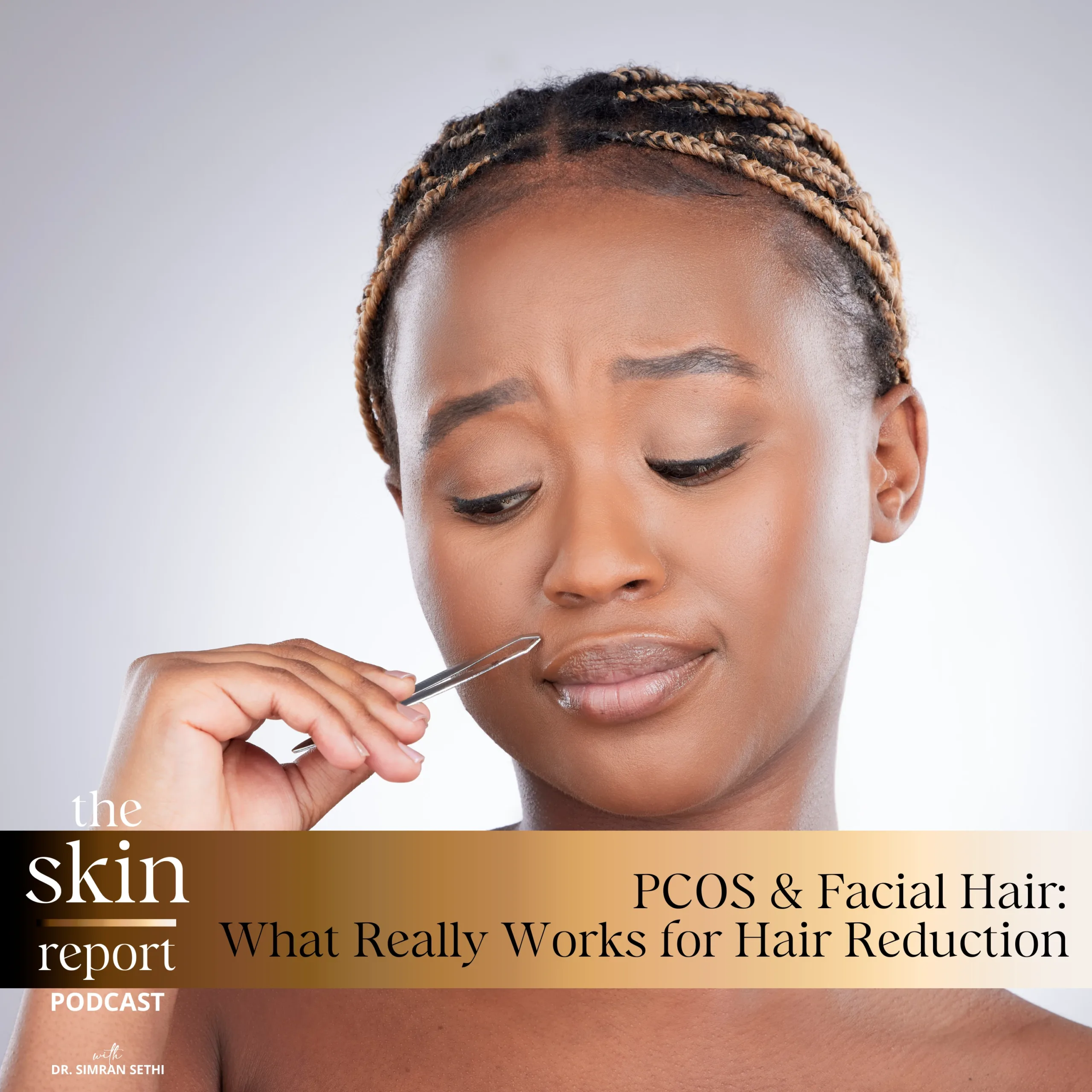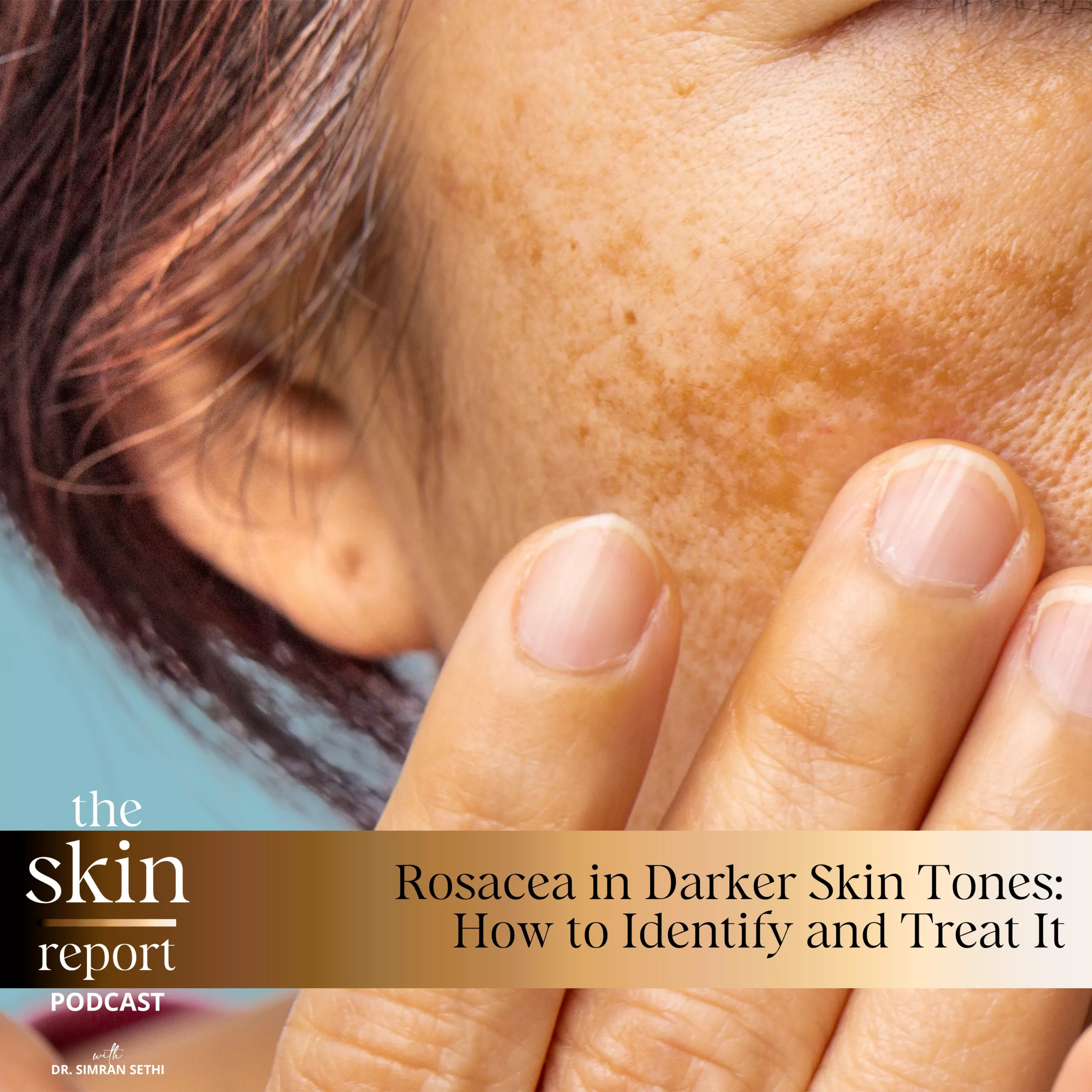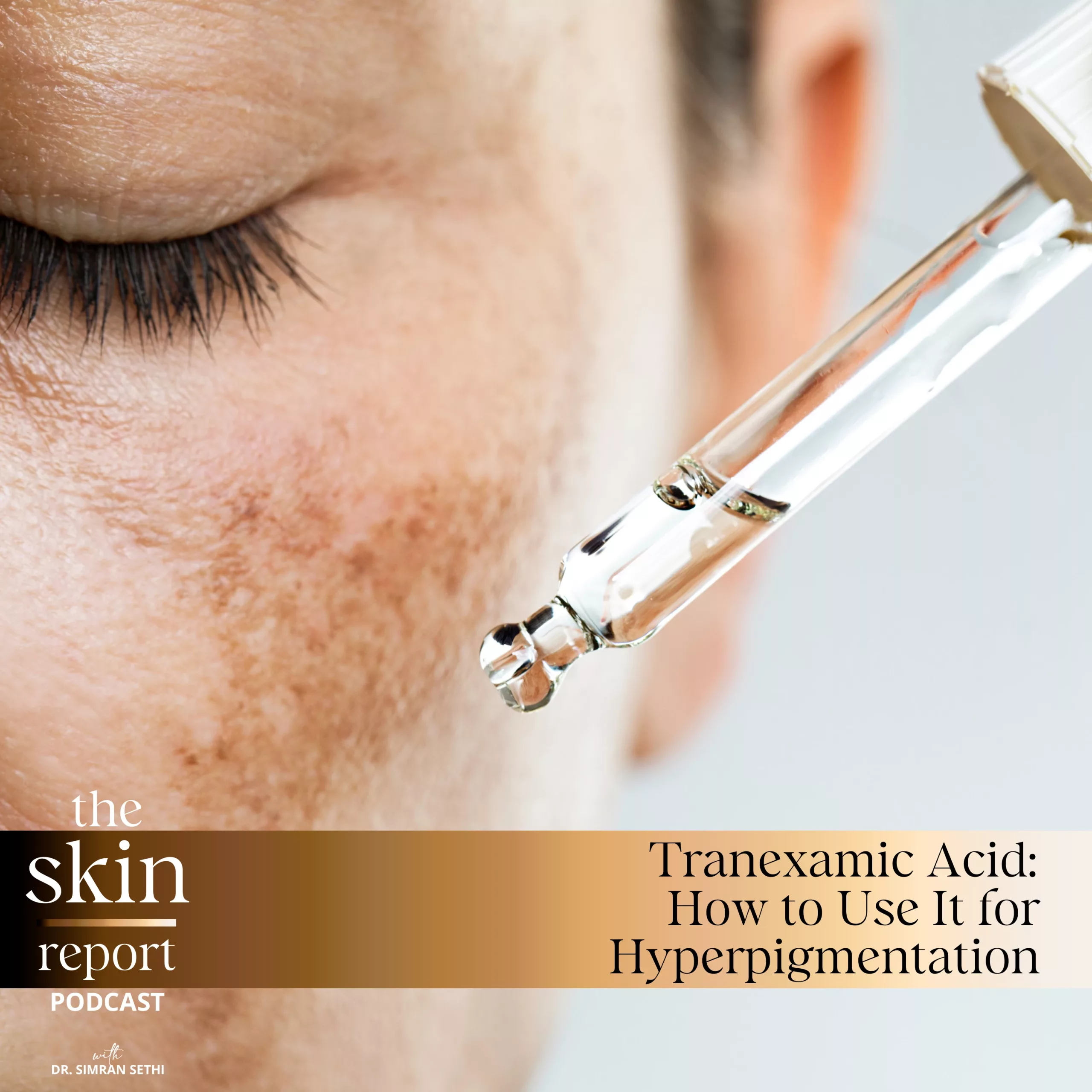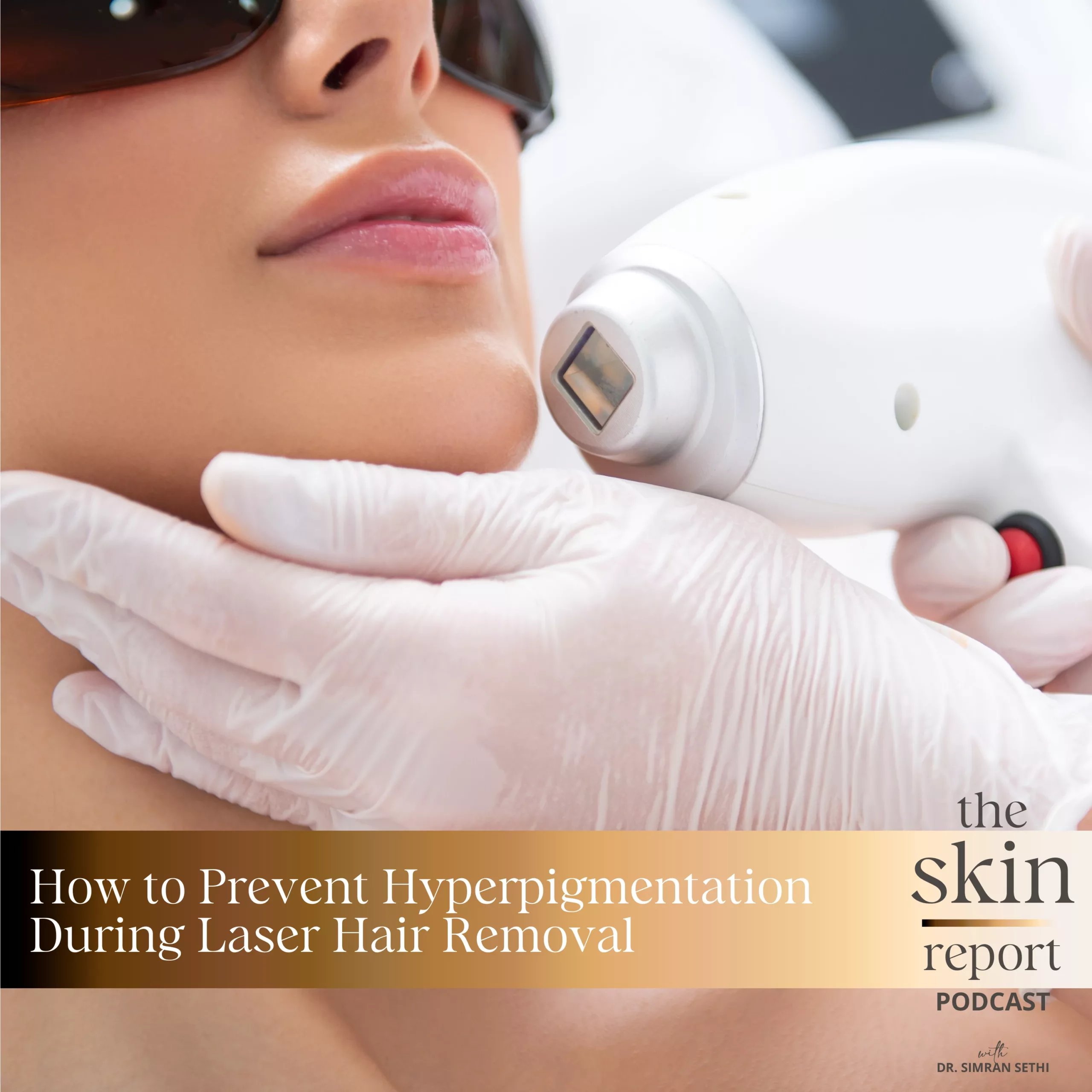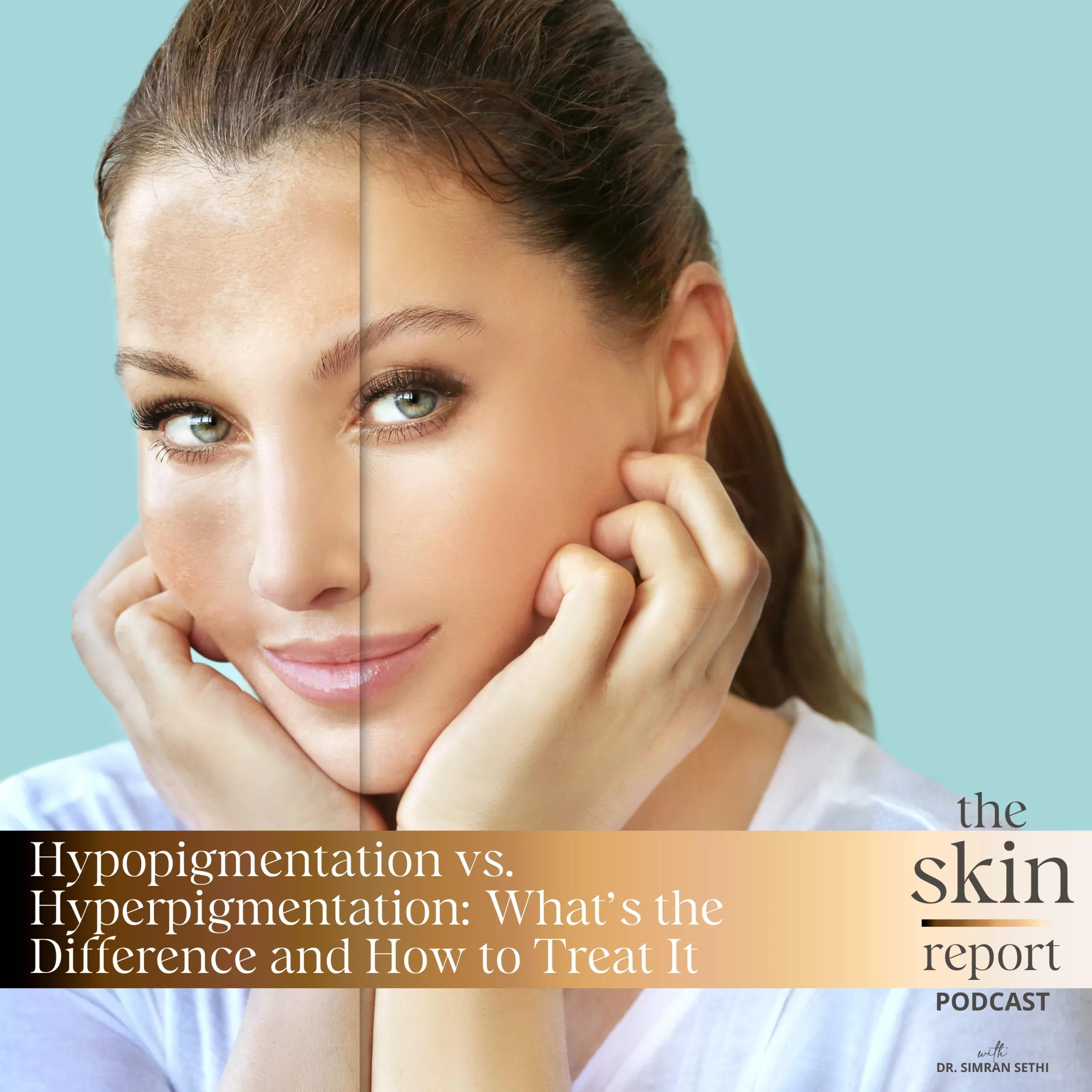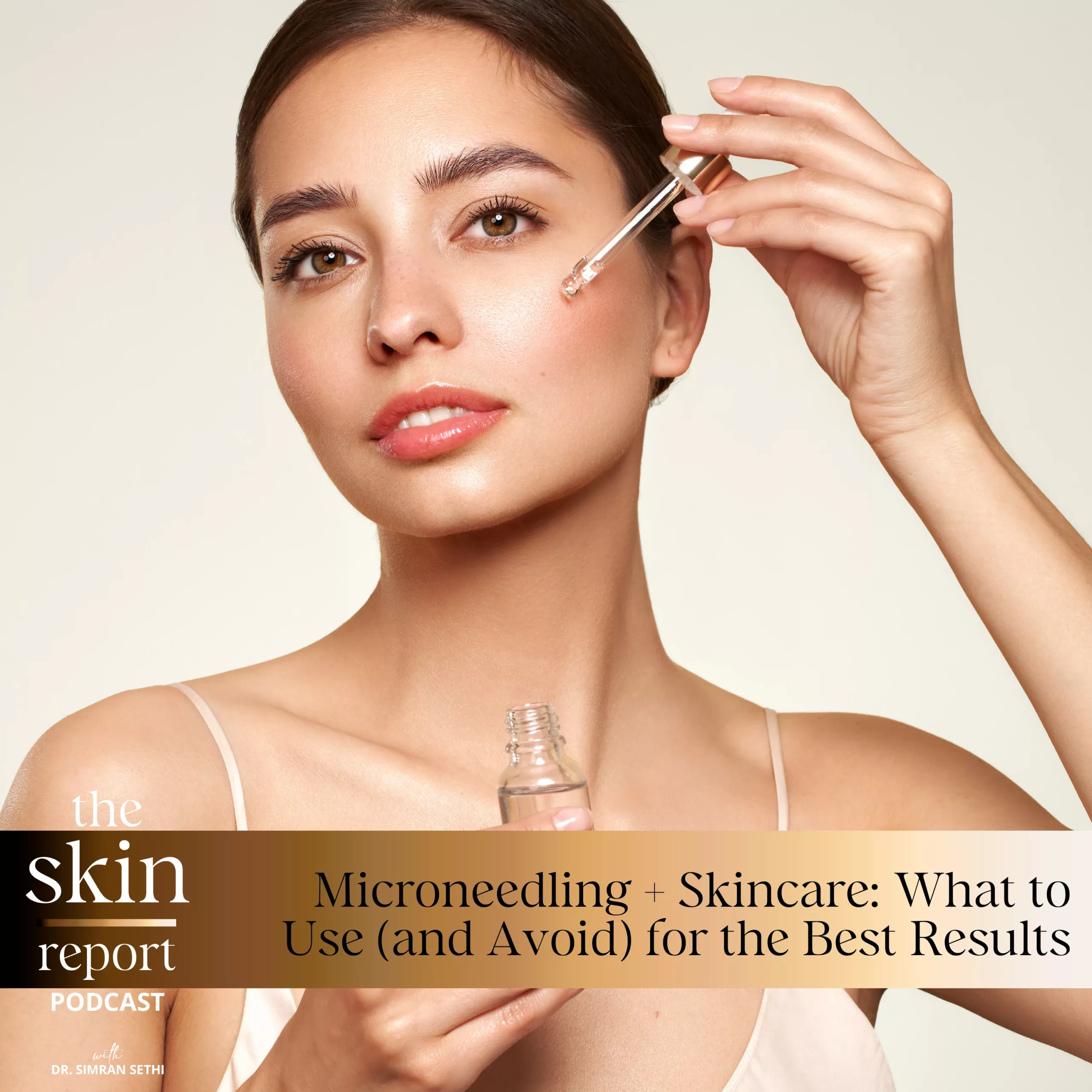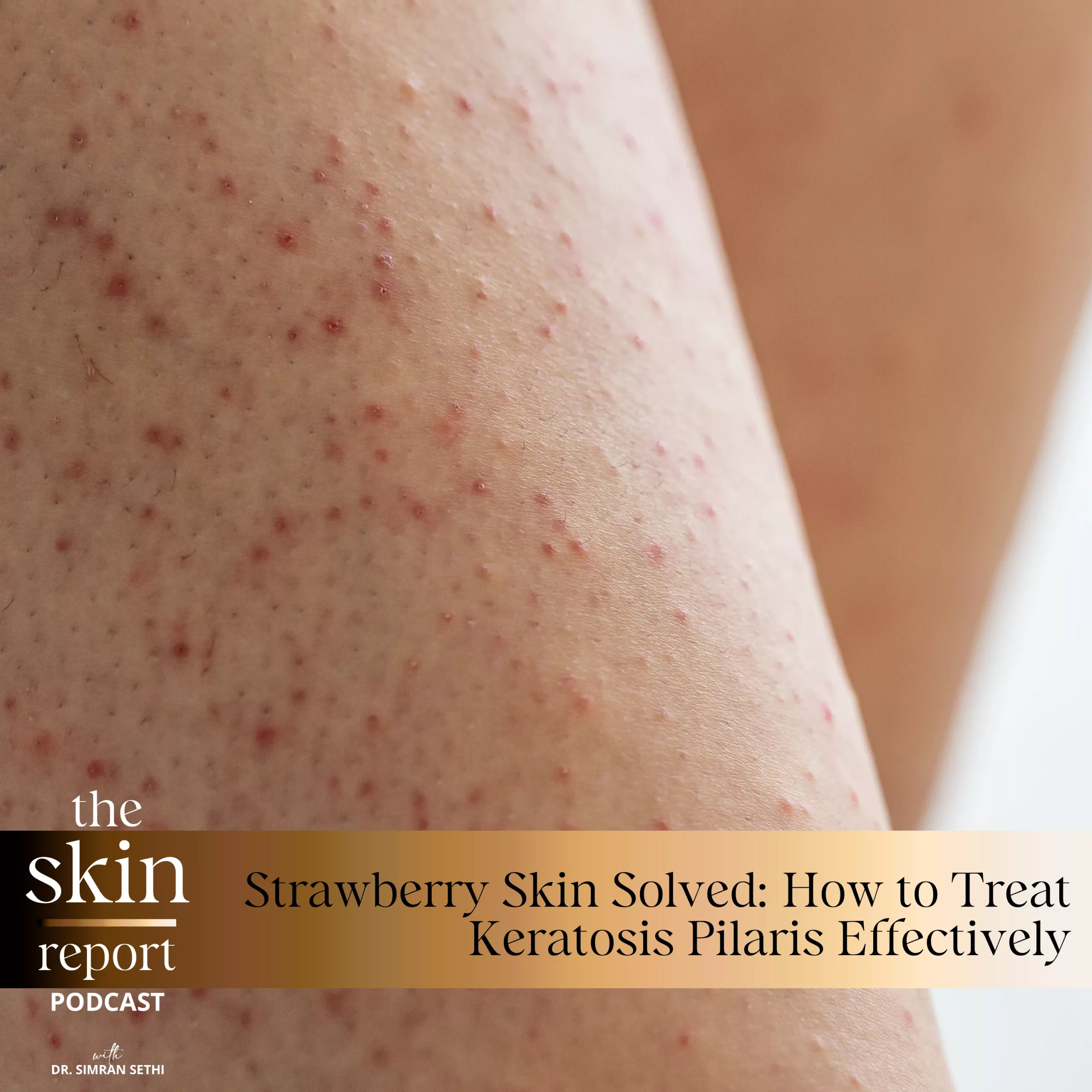Melasma can cause visible effects on the skin’s surface, resulting in hyperpigmentation, usually occurring as dark spots on the face. But melasma can also have other side effects, such as skin aging, inflammation, and vascular changes. So what exactly causes these melasma symptoms? To truly understand melasma’s impact on the skin, we need to understand what happens below the skin’s surface when people develop melasma.
The Skin Report is a podcast created to educate listeners on methods to improve skin health for people of all ethnicities and ages. This week’s host Dr. Sethi continues with her October series featuring topics related to the skin condition melasma. In this episode, she explains the science behind melasma and how it affects the skin. She also describes how people of color should safely cleanse, exfoliate, and moisturize their skin to treat dermal melasma pigmentation. With proper knowledge, skin rejuvenation techniques, and anti-aging practices, people with melasma can effectively manage their skin condition.
Beauty Instagram: https://www.instagram.com/renewmd_beauty/
RenewMD Beauty Medical Spas, California: https://renewmdwellness.com/
This transcript was exported on October 4, 2022 -view latest version here.
Skincare can sometimes feel overwhelming, whether it’s finding the right products, ingredients, or treatments. There’s a lot out there, but not always for women of color. That’s why I set out to educate myself and others, so that we can all feel beautifulin our skin. Hello and welcome to The Skin Report. I’m Dr. Simran Sethi, an internal medicine doctor, mom of three, and CEO and founder of RenewMD Medical Spas and Skin by Dr. Sethi.
If you’ve been following our show, you may know that we did a four part series in September on skin of color and the skincare industry. I highly suggest going back and listening to that series, as we share some valuable insights on racist practices in the beauty industry, common concerns for melanated skin, and how to overcomethem. For the entire month of October, we will be launching a new series on one of those common yet misunderstood and under-researched skin conditions, melasma. This will be our second episode in the series and I highly suggest going back and listening tolast week’s show, as it lays the foundation for what melasma is and who is most likely to experience it. For today, we’ll be chatting about what is happening below the surface of your skin when you develop melasma. Having an informed understanding of the way melasma works can help us tackle it better with science-backed skincare. Without further ado, let’s dive in.
When people think of melasma, they often think about pigmentation on the face. This makes sense as the increased pigment is the most visible feature of the condition. But is it the most notable? In reality, there are other things that are going on underneath the skin surface and understanding those other changes is important in understanding how to treat melasma. When we take biopsies of melasma lesions on patients, we uncover an important discovery. The biopsied skin shows signs of advanced aging and protein breakdown, which means that melasma does not just cause hyperpigmentation, it also rapidly ages the skin. Therefore, therapies that only focus on reducing pigment may not lead to younger, healthier skin. Instead, we want to find melasma treatment plans that target hyperpigmentation as well as skin rejuvenation and anti-aging.
In our previous episode, we discussed the epidermis and the dermis, the top layer and deeper layer of our skin. If you’ll recall, our pigment producing cells, melanocytes, live in our epidermis. However, there is a layer of skin between the epidermis and dermis called the basement membrane. With melasma, this membrane is weakened, which leads to melanin leaking into the dermis. Once melanin gets into the dermis, it becomes even more resistant to any type of elimination and most medical treatments cannot touch it. This is an important concept to understand. I know that melasma waxes and wanes, and when I tell patients that we don’t have any permanent solutions for melasma, they almost always ask, “Then why should I even bother investing in treating this?” I completely understand this, and it would be my natural instinct too. However, it is important to control melasma as soon as possible because if left untreated, your skin will keep producing pigment in the epidermis and as the epidermis gets saturated with excess pigment, it will keep leaking pigment into the dermis making that excess pigment very difficult to get to.
In our next episode, I will discuss the only current treatment for dermal melasma pigmentation. For now, stick around to learn about what’s happening in our cells with melasma and what we can do about it. Upon further steady, we know that in melasma, the skin cells age quickly. However, there are few other things that are at play. When we perform a histological analysis of the melasma lesion, which is when we examine a biopsy under a microscope, we also have found excess inflammation and vasculature. Vasculature means that we find a presence of blood vessels in those skin lesions. When looking at melasma lesions, we find a greater number, size, and density of blood vessels compared to the area around the lesion. Astudy of 50 Korean women with melasma reported an increase in the number and size of dermal blood vessels in lesional skin compared with healthy skin. The number of blood vessels correlated with the extent of hyperpigmentation. We also found more of VEGF,known as a pro angiogenic vascular endothelial growth factor. But that’s a mouthful, so we’ll refer to it as VEGF, a protein that stimulates blood vessels.
In this process, we not only have an increase in blood vessels, but also something called arachidonic acid, which drives up melanocyte activity. In darker skin tones, excess inflammation and vasculature presents as dark spots, which adds to the appearance of hyperpigmentation from melasma. This is also the finding that has introduced additional skincareingredients that can help with the reduction of pigmentary changes related to excess vascularity. Just like incorporating antiaging into melasma treatment, not just pigment reduction, we also want to calm inflammation and excess vascular changes. Melasma is a complex condition about which we’re still learning. However, with the knowledge that is multifaceted, we can curate a treatment plan that tackles all sides to accomplish better results. Much of what we’ve discussed so far in this episode is at the cellular level, an important up-close view of what’s happening to ourselves in real time. However, I understand that it can feel a bit abstract. So, let’s chat about how to address not just the pigment problems that come with melasma, but also the aging, inflammation, and vascular changes.
So, you’ve made it through the scientific information. Now, it’s time to see how it applies to skincare. We’ll begin with cleansing. People with melasma should treat their skin barrier as gently as possible. When people havemelasma, they tend not to have oily or acne-prone skin. So, there’s no need to use harsh cleansers that strip the skin of natural oils. Instead, a gentle hydrating cleanser can help restore the skin’s lipid barrier. As the skin in melasma is already rapidly aging, it’s prone to easy breakage in the lipid barrier. So we want a cleanser that focuses on nourishing the skin, not stripping it. When it comes to exfoliating, what should those with melasma look for? Well, first, I’d like to say that we should be very cautious about exfoliating if we do it at all. First, I would stay away from chemical exfoliants like glycolic or lactic acid exfoliants, as these will strip the skin of natural oils. Remember, many companies choose not to call their chemical exfoliants what they really are, and instead call them glow serum or clarifying serum, which attracts a lot of women with melasma’s attention.
However, they end up really disrupting the skin’s natural moisture balance and barrier. I would also avoid frequently using mechanical exfoliants and only do so once a week with a very fine mechanical exfoliant. Skin with melasma behaves like older skin, and as we age, skin becomes drier, which leads to build up of flaky dead skin on the skin surface. So, you do need some exfoliation to remove this dead layer and to help other product penetrate the skin better. By only exfoliating once a week, we can avoid micro tears and breakage of the skin barrier. My melasma patients have found success with my line’s skin polish as it contains a very fine physical micro exfoliant with pomegranate extract that helps dissolve dead skin cells. If you’re struggling with melasma or just have dry skin, I recommend checking out my skin polish. Also, remember that a face brush is a form of physicalexfoliation and can be too aggressive for people with melasma, as these are usually notorious for causing micro tears in the skin.
Before we wrap up today’s episode, I want to quickly mention moisturizer. When it comes to melasma, we know that the skin ismore aged and any disruption in the skin barrier function will only increase pigment. So, keeping the skin hydrated is key. Replenishing with lipids is a great tool to have in your toolbox when it comes to tackling melasma. While melasma can be stubborn and sometimes frustrating, I hope the series brings you some relief that there are steps we can take to reduce pigment. However, if the approaches we spoke about today are not enough, there are skin treatments we can try, ones that are more intensive and cutting edge. In our next episode, we’ll find out what those are.
If you’d like to learn more about science-backed skin care or medical aesthetic treatments, please subscribe to and turn on notifications for The Skin Report, so you always know when a new episode is up. We have a newsletter that you can sign up for on theskinreportbydrsethi.com, so that you can stay up-to-date on all our new episodes, blogs, products, and more. Additionally, if you have a skincare question or want to make an episode topic recommendation, please message me at renewmdwellness.com, which is linked in my show notes, and I’ll be sure to answer your question in an episode soon. Thanks for listening and until next time, love the skin you’re in and celebrate your beauty.
Transcript by Rev.com


